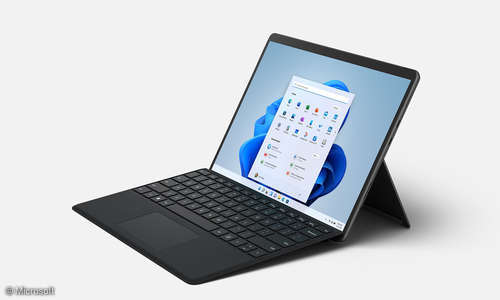Tech
Microsoft Surface Pro 8 vs 7: What are the differences?

With the presentation of the Surface Pro 8, Microsoft wants to attack the convertible market again. The notebooks can already be pre-ordered from the official Microsoft Store in time for the start of Windows 11.
Based on the release price, however, the new models are significantly more expensive than the introductory prices of the predecessor Surface Pro 7. In the following overview, we show what differences are noticeable between the two devices and whether the surcharge is worth it.
Microsoft Surface Pro 8 vs 7: All the differences at a glance
With the Surface Pro 8, Microsoft is breaking new ground in terms of design. The company has opted for a larger 13-inch display (Surface Pro 7: 12.3 inches), but the device itself remains just as large as its predecessor thanks to the slimmer frame. The resolution has been increased to 2,880 x 1,920 pixels in line with the new screen size, although the pixel density is 267 PPI (pixels per inch) on both devices.
The supported features of the display have also been refreshed. The refresh rate of the Surface Pro 8 can optionally be increased to 120 Hertz and thus offers a smoother picture experience compared to the 60 Hertz display of the Pro 7. Also new are Dolby Vision and an ambient light sensor that can adjust the screen brightness to external light influences.
In terms of performance, the Surface Pro 8 has also received a significant upgrade. Even the basic model of the new convertible works with an eleventh generation Intel quad-core and can optionally include an i5 or i7 processor. In addition, the RAM can be expanded up to 32 gigabytes. The smallest version of the Surface Pro 7, on the other hand, can only rely on a tenth generation i3 dual-core and can be upgraded to a maximum of 16 GB of RAM.
According to the company, the battery performance has also improved: The Surface Pro 8 can last up to 16 hours on a single charge, while the previous model managed up to 10.5 hours. Whether this performance is also possible in 120 Hz mode remains to be seen.
With the replacement of the previous USB-A ports with Thunderbolt 4 ports, the Surface Pro 8 finally has the latest connection standards. The new connections allow users, among other things, to connect two 4K monitors at 60 Hertz or one 8K monitor at 30 Hertz.
When it comes to the cameras, there has only been a relevant change in the main camera. It now has a resolution of ten instead of eight megapixels and can also record video content in 4K resolution.
Microsoft Surface Pro 8 vs 7: which model is worth it?
Basically, the new Surface Pro 8 represents a significant upgrade compared to its predecessor. Above all, the smoother running 120 Hz display and the improvements in CPU performance should ensure a more powerful working environment.
On the other hand, there is the Surface Pro 7, which is available from Amazon for almost half the price of the Pro 8. Those who place less value on 120 Hz compatibility and the latest components will still make a good purchase with the previous model.



